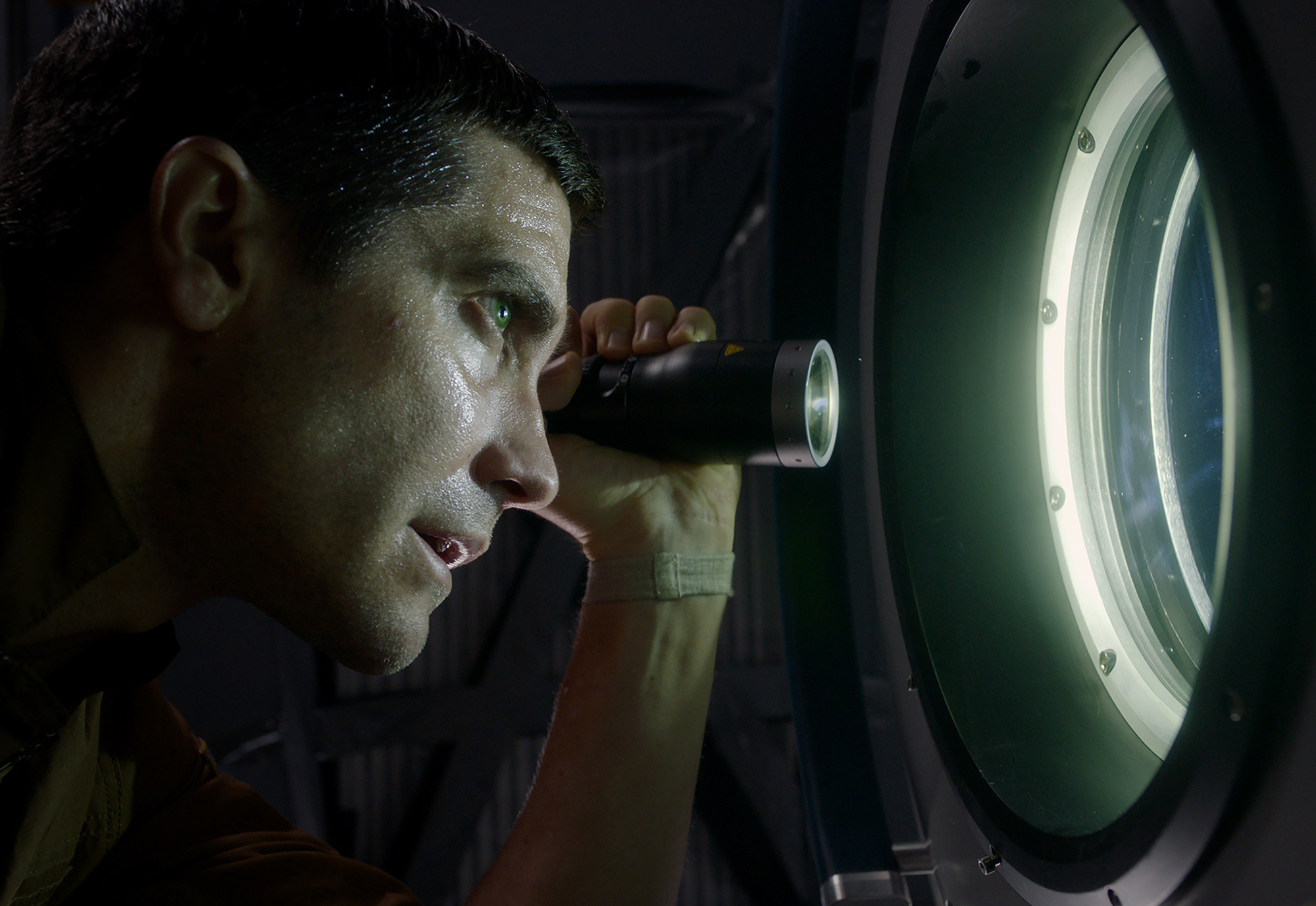
In regards to the fear of the unknowable, there is no writer more influential today than H.P. Lovecraft.
His stories saw humankind come into contact with beings older than time: sinister masses of tentacles whose very existence could drive someone completely mad. This was the birth of “cosmic horror”—that is, horror rooted in the idea that reality as we know it is a fragile illusion separating us from the true, cold nature of the universe.
The concepts that Lovecraft explored in his stories have been highly influential in science fiction films; such films feature people trapped on derelict space vessels and hunted by horrors, and people forced to descend into Hell-like dimensions.
Below are 10 films that dive into the chilling realms of cosmic horror. As you will discover, the visual nature of each film conveys this idea of unknowable horror to the audience in different ways, ranging from the terror of isolation in an unforgiving void, to the claustrophobic sensation of being hunted by an unseen predator down narrow corridors.
Top: Cosmic horror films are driven by the human desire to explore and peer beyond the veil.
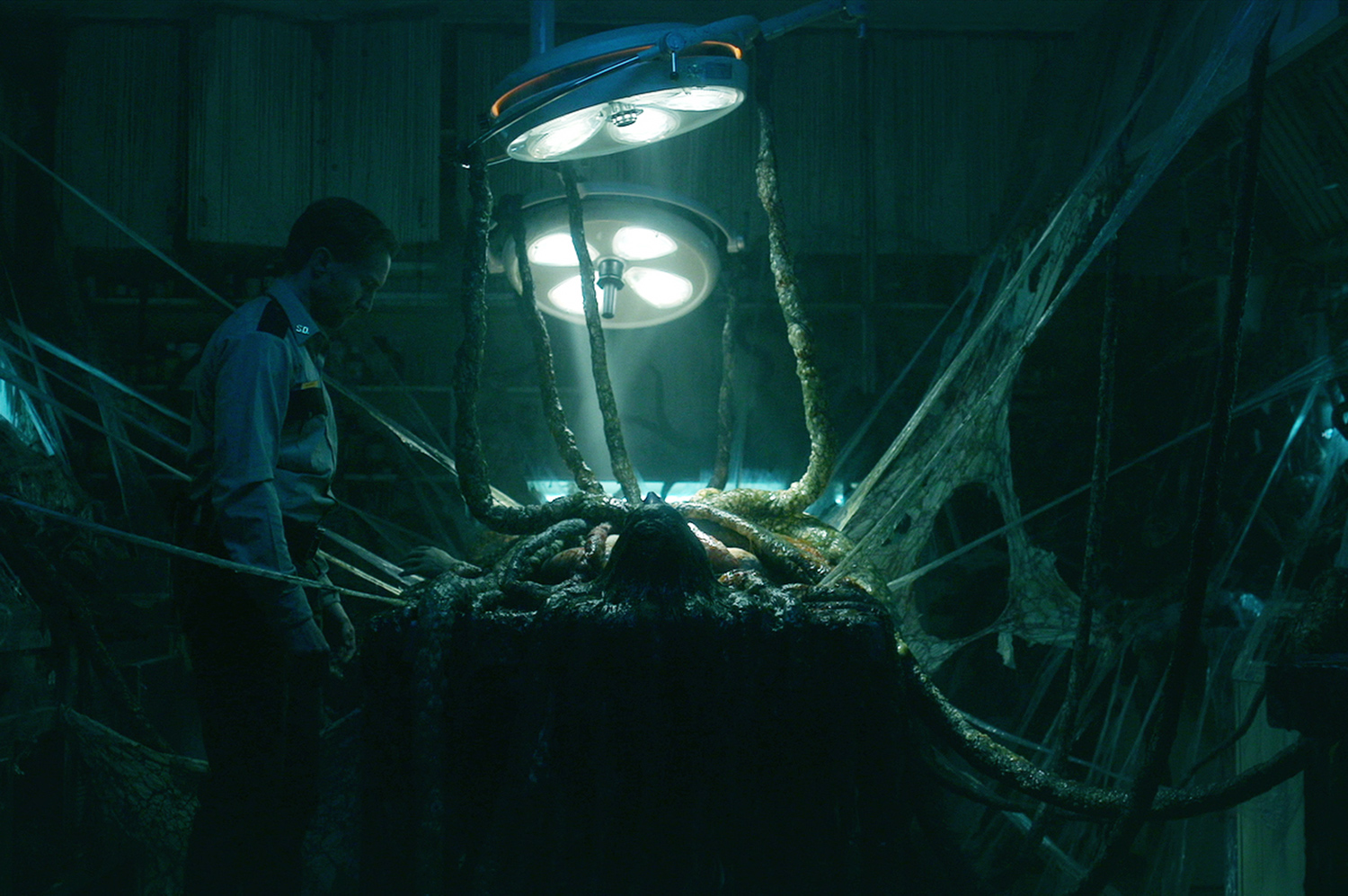
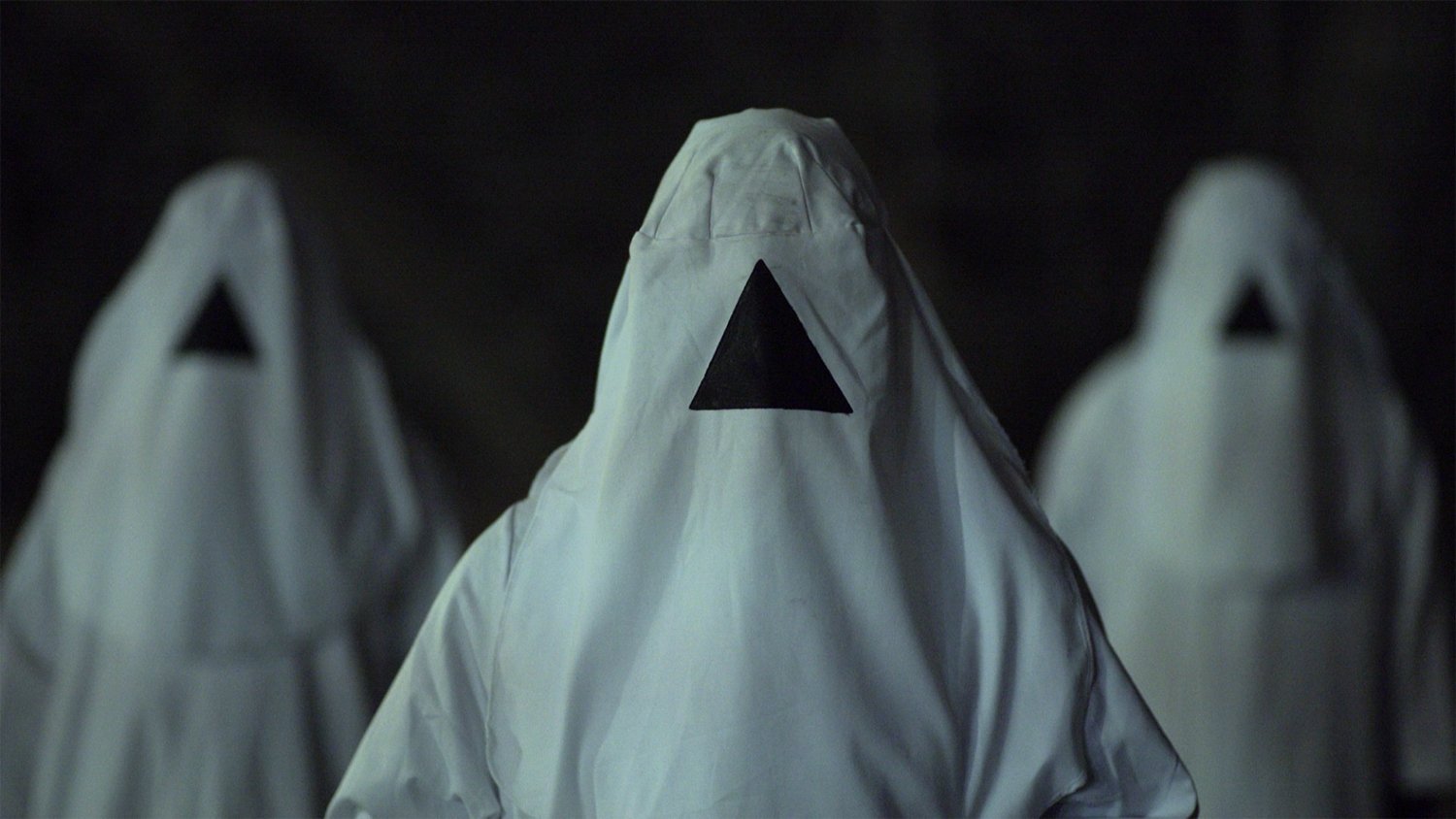
“The Void” is a Hellish descent that pays homage to some of horror’s greatest filmmakers.
The Void
“The Void” is one of the best examples of a film using its visuals to depict cosmic horror. This Canadian film premiered in 2016 and is noteworthy for its ample use of practical special effects. The superb camerawork and haunting aesthetic call back directly to John Carpenter’s “The Thing,” which itself was heavily influenced by Lovecraft. Settings go from bleakly beautiful to disturbingly grotesque in the span of a single scene, and while that transition can feel jarring, it never feels out of place.
The film’s story focuses on a small group of people in a hospital that is on the verge of being closed down after a fire gutted part of the building. Things take a turn for the deadly when one of the nurses kills a patient after mutilating her own face; and it isn’t long after that before a group of knife-wielding cultists trap them inside. As the group is forced deeper into the hospital, they also pass into a world beyond the one they know; this world is brought to gruesome life by the film’s creative team and actors.
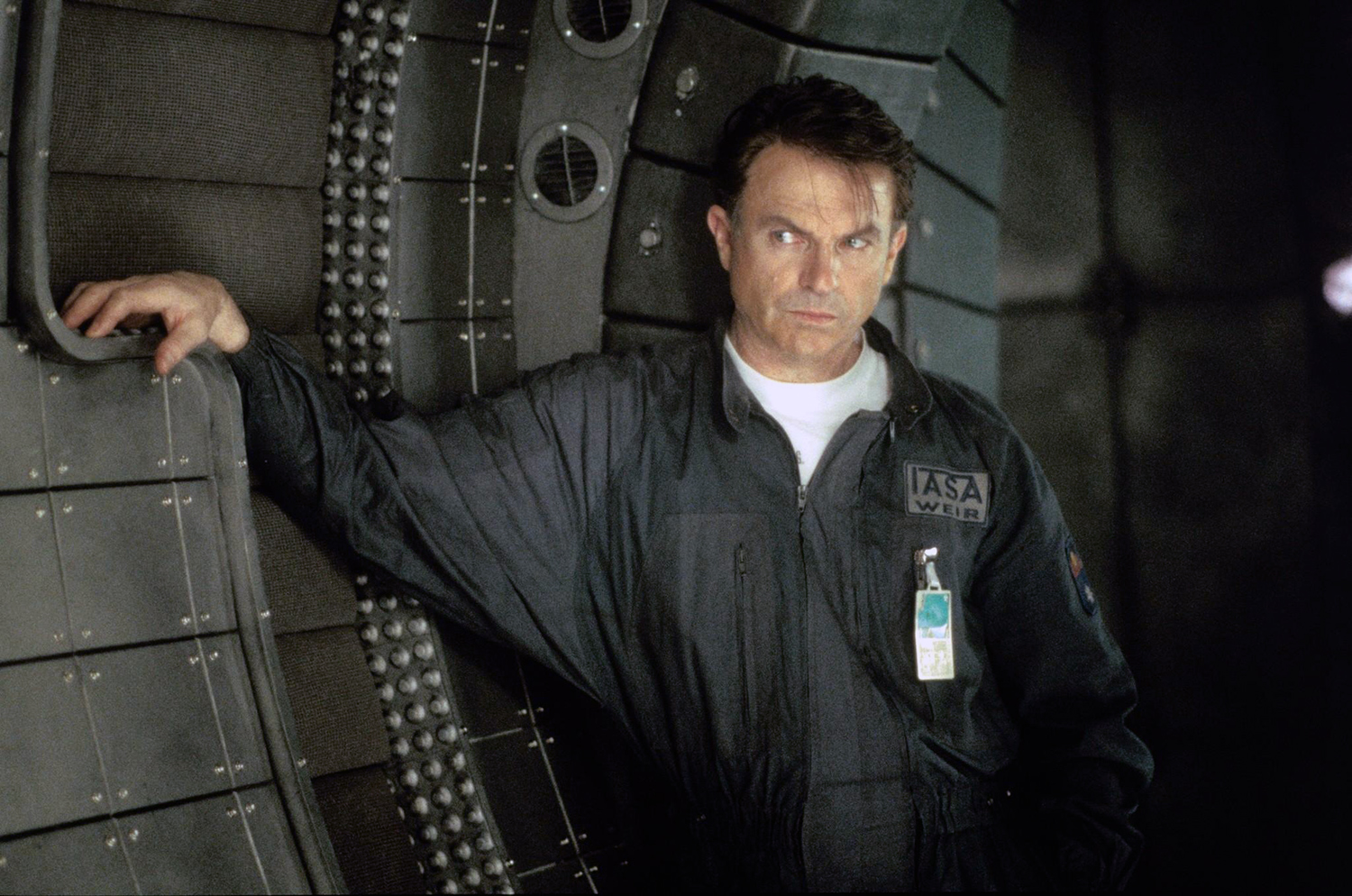
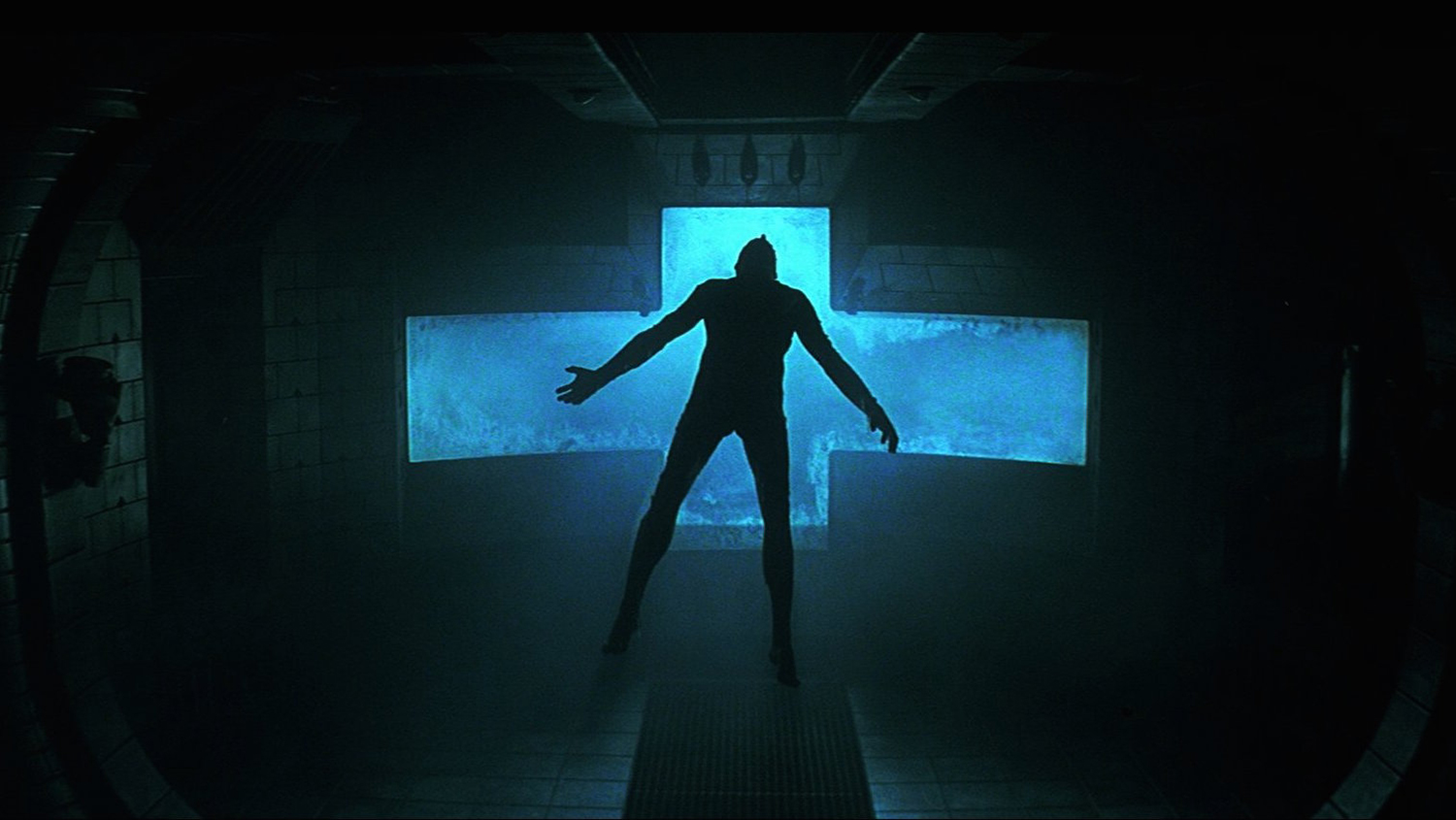
The cult classic film follows a spaceship that has passed through a black hole—and the terror it brings back with it.
Event Horizon
Where “The Void” is best known for its visuals, “Event Horizon” is best known for what its visuals could have been. The film follows a rescue crew that has been sent to Neptune to recover the titular spaceship, which had disappeared into a black hole for seven years before reappearing with an active distress beacon. Shortly after making contact, the crew learns that when the Event Horizon passed through that black hole—and into a dark, alternate dimension—it brought something back with it. One by one, the crew is pulled into this dimension in scenes that are brief yet grotesque.
While “Event Horizon” has been criticized for cribbing heavily from other films (“Aliens,” “Hellraiser,” and “2001: A Space Odyssey,” to name a few), it still became a cult phenomenon after its release. Part of its fame is due to its set design, which is perhaps best described as deep-space grunge meets slaughterhouse. And while the film is highly derivative, strong performances from the cast makes the material far more enjoyable than it would otherwise be.
In addition, in 2013, unused set photos were released that suggested the film was originally intended to be much darker and more gruesome. Fans of the film have been pining for an unedited cut to be released, and while that seems unlikely to come to fruition, it is still enough to secure “Event Horizon’s” ongoing infamy.

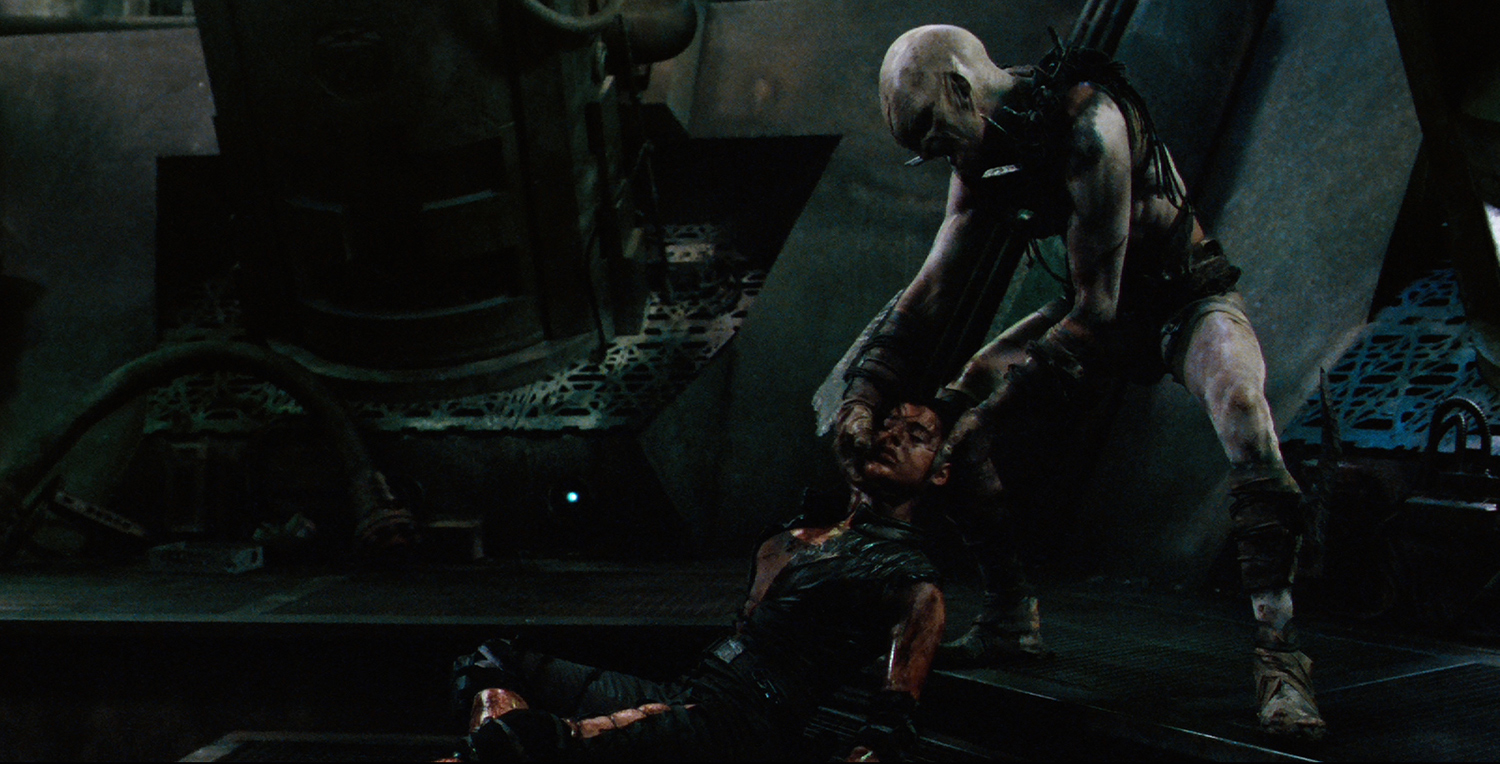
“Pandorum” is a deep-space struggle for survival not just for the people being hunted, but for the entire human race.
Pandorum
Aesthetically speaking, “Event Horizon” and “Pandorum” have a lot in common. The term “pandorum” refers to what happens to the human psyche as a result of deep-space hibernation; it is characterized by a feeling of abandonment and hopelessness alongside dementia symptoms. This feeling of futility and mental deterioration is reflected in the film’s set design.
The movie begins when two flight crew members awaken from their hibernation onboard the ship, Elysium. They are part of a massive colonization effort headed towards an Earth-like planet called Tanis, but the two find the ship apparently abandoned and experiencing power fluctuations. Upon further exploration, some crew members are found alive and sane—alongside tribes of cannibalistic humanoid creatures that are hunting them down.
While this particular cult film does have obvious Lovecraftian influences, the madness that they experience does not come from strange, otherworldly beings; it comes from other humans who have been pushed past the brink of sanity. The film bends towards action-horror, and thus does not linger on the psychological elements of the plot; instead, interestingly, the experiences of hopelessness and dementia are embodied by the decrepit shell of the Elysium. From claustrophobic corridors and air ducts to metal catwalks overgrown with lichen, the ship itself feels like a perverse futuristic hunting ground where you are either the predator, or you are the prey.
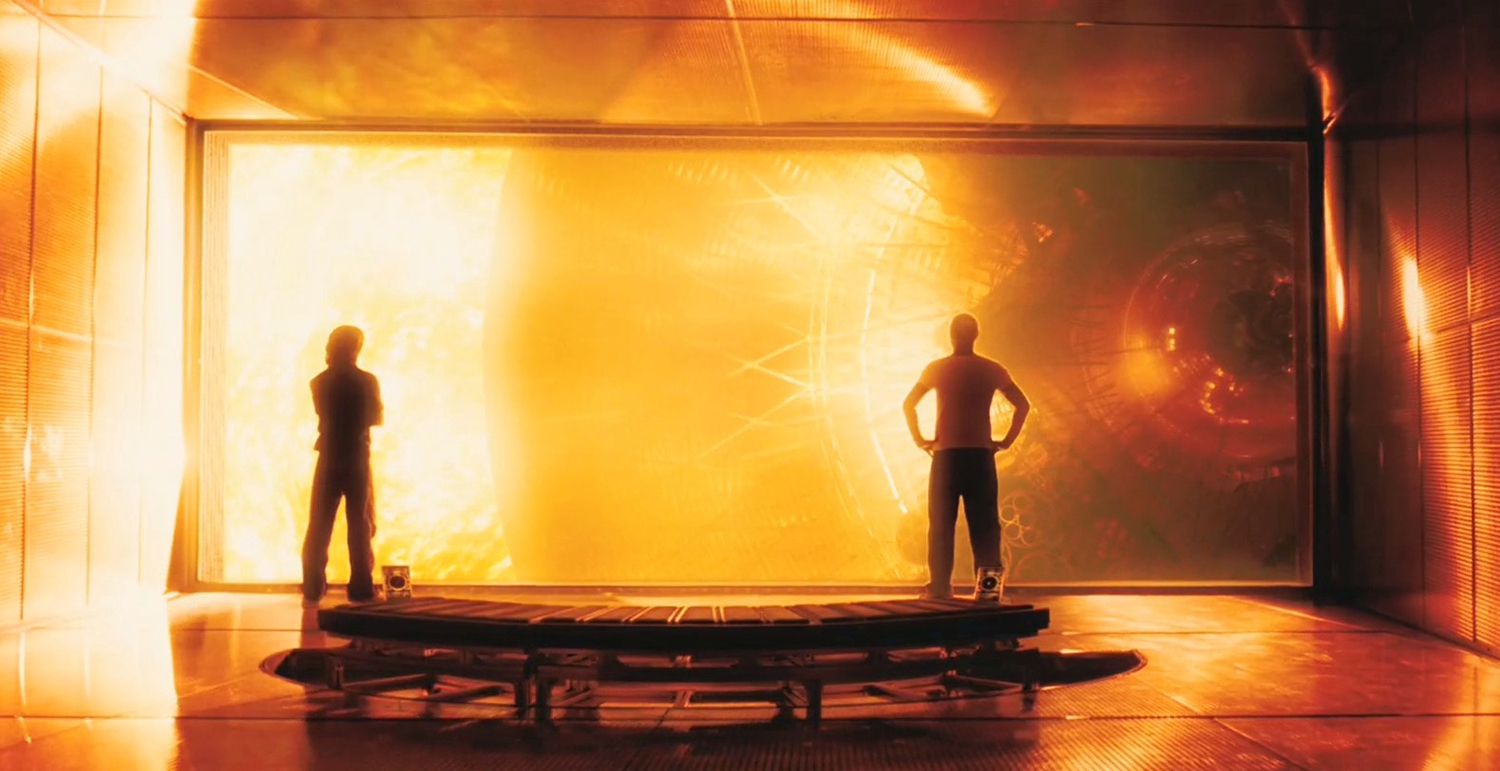
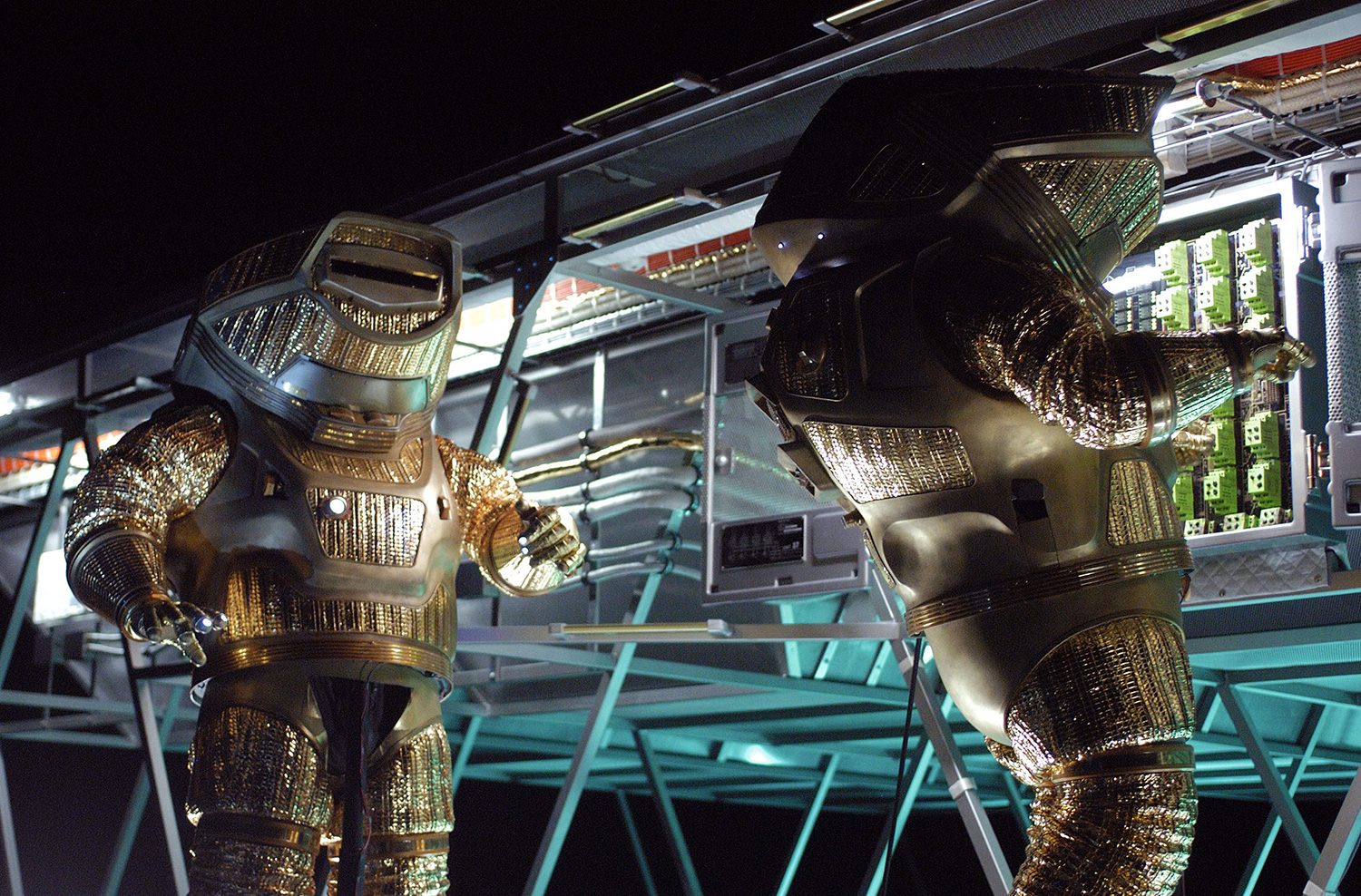
How far will people go to save themselves, and what will be lost along the way? “Sunshine” beautifully frames these questions.
Sunshine
Whereas “Pandorum” tells an action-horror story, “Sunshine” is more drama-horror. In this film, the deep-space mission has been undertaken by a handful of specialists with the intention of re-stoking the dying sun by triggering another nuclear reaction in it. Their payload is a massive atom bomb, and once they get close enough, they plan on firing it into the sun to (hopefully) extend its lifespan by just a little. In the film’s universe, something like this has only been attempted once before, and the previous mission was a failure.
Thus, every decision the crew faces is given a sense of pressure that makes their decision feel real: who should go out to make important exterior repairs on their ship based on who they can most afford to lose? While there are external forces working to sabotage the mission, this film would still work if it relied purely on the psychological pressure on the crew. Whether or not there is something inhuman attacking them, it feels like there is. The crew is driven to the point of madness, and the audience is given a look into that process.
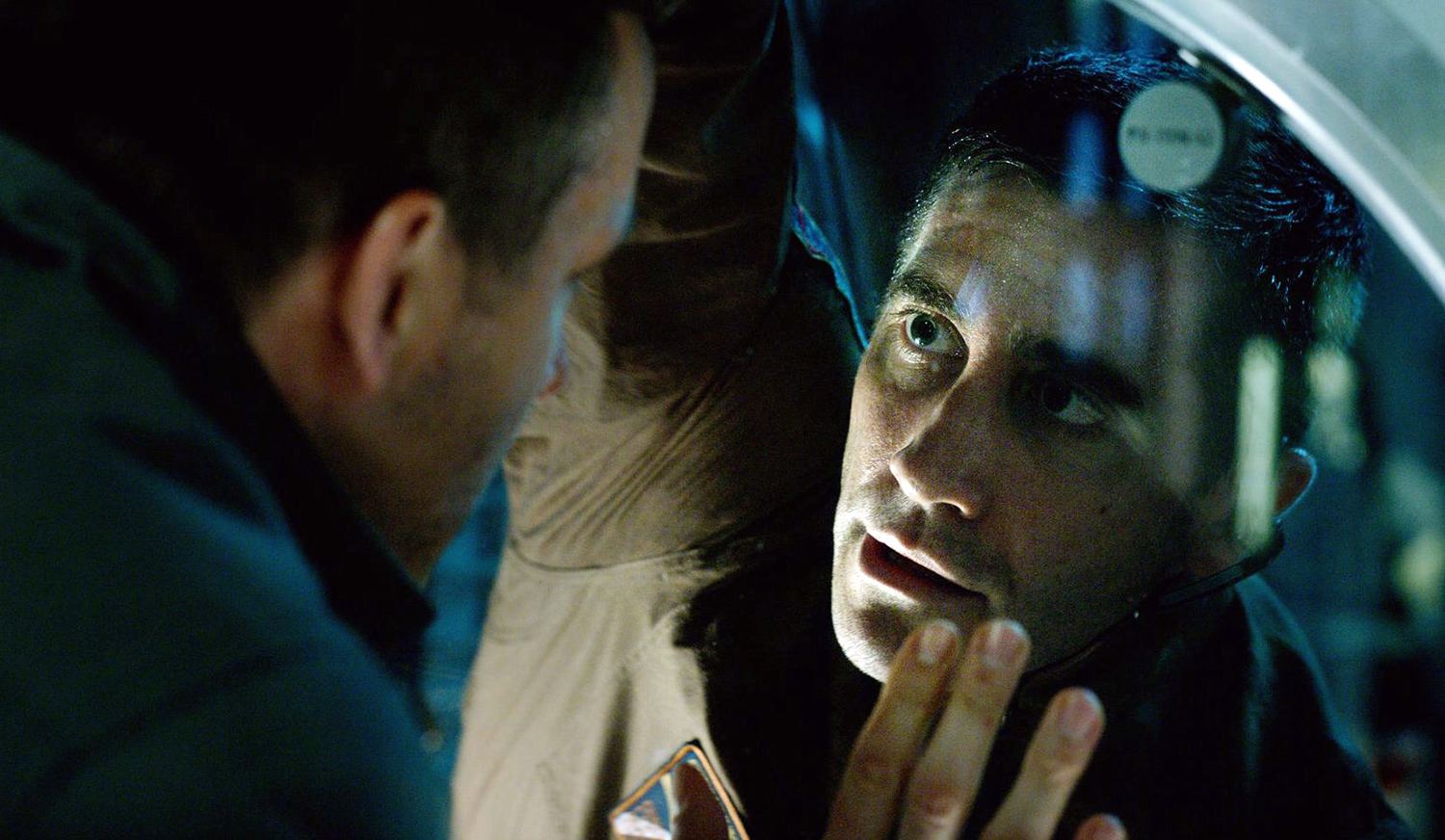
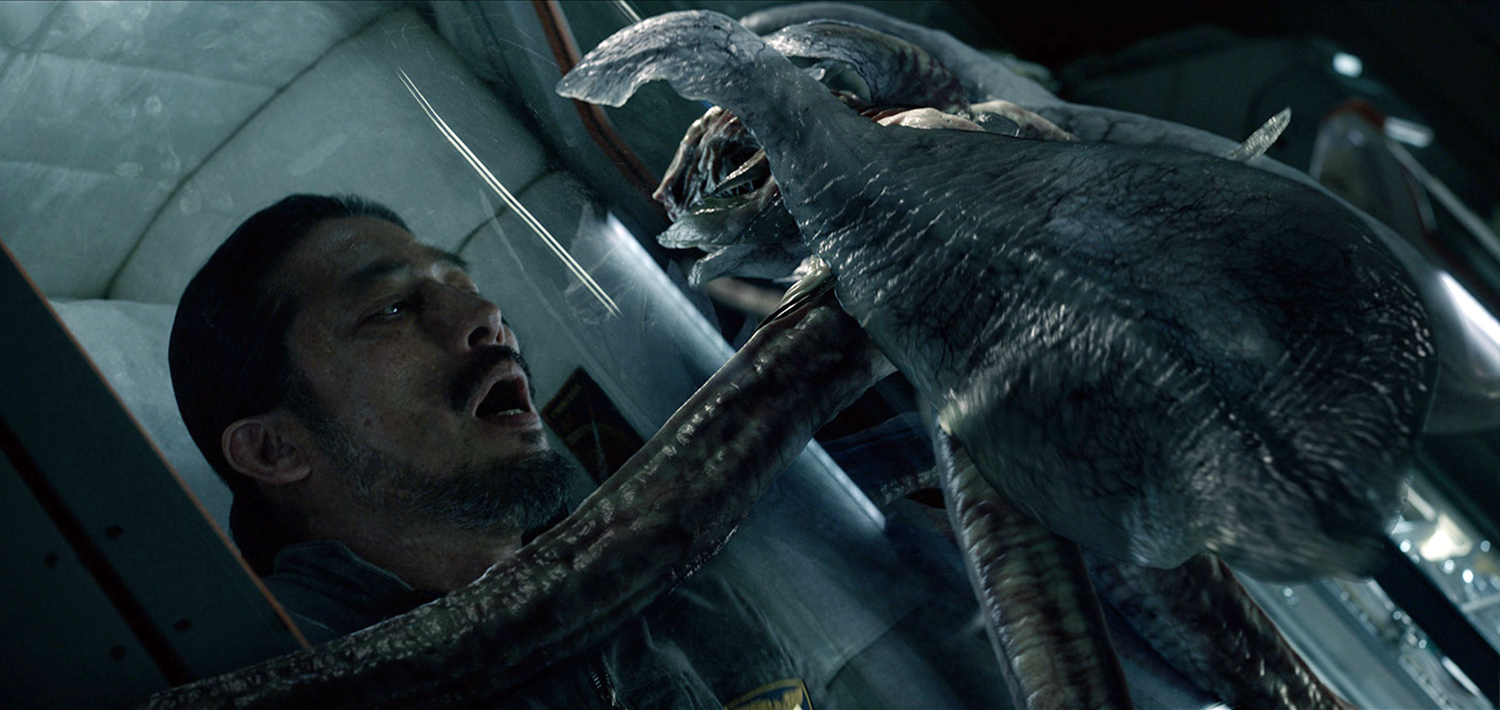
Claustrophobic terror meets the dread of isolation in this cat-and-mouse horror film.
Life
While “Sunshine” deals with what is potentially the end of life on Earth, “Life” is more concerned with some potential lifeforms on Mars. A team aboard the International Space Station (ISS) is given the task of analyzing soil samples taken from the red planet that could contain evidence of an extraterrestrial organism. One member of the team manages to revive a cell from the sample, which rapidly grows into a multicellular organism; however, what starts out as a scientific breakthrough turns into a creature feature when said organism escapes its containment unit and begins to consume whatever organic life it comes across.
“Life” cribs notes from “The Thing from Another World” (as well as that film’s John Carpenter–helmed remake, “The Thing”) in terms of its monster. The alien organism of “Life,” dubbed “Calvin,” possesses a ruthless survival instinct that pits it against the crew of the ISS. From a story and visual standpoint, the film shares a common lineage with “Alien,” with the grime and grit of that film replaced with the clinical spaceship design of “Gravity.” Scenes fluctuate between claustrophobic close-ups within the station, with special attention given to the actors’ eyes and mouths, and broad-sweeping exterior shots in the vacuum of space. These two styles contrast the film’s two styles of cosmic horror: the feeling of isolation, and the feeling that you are definitely not alone.
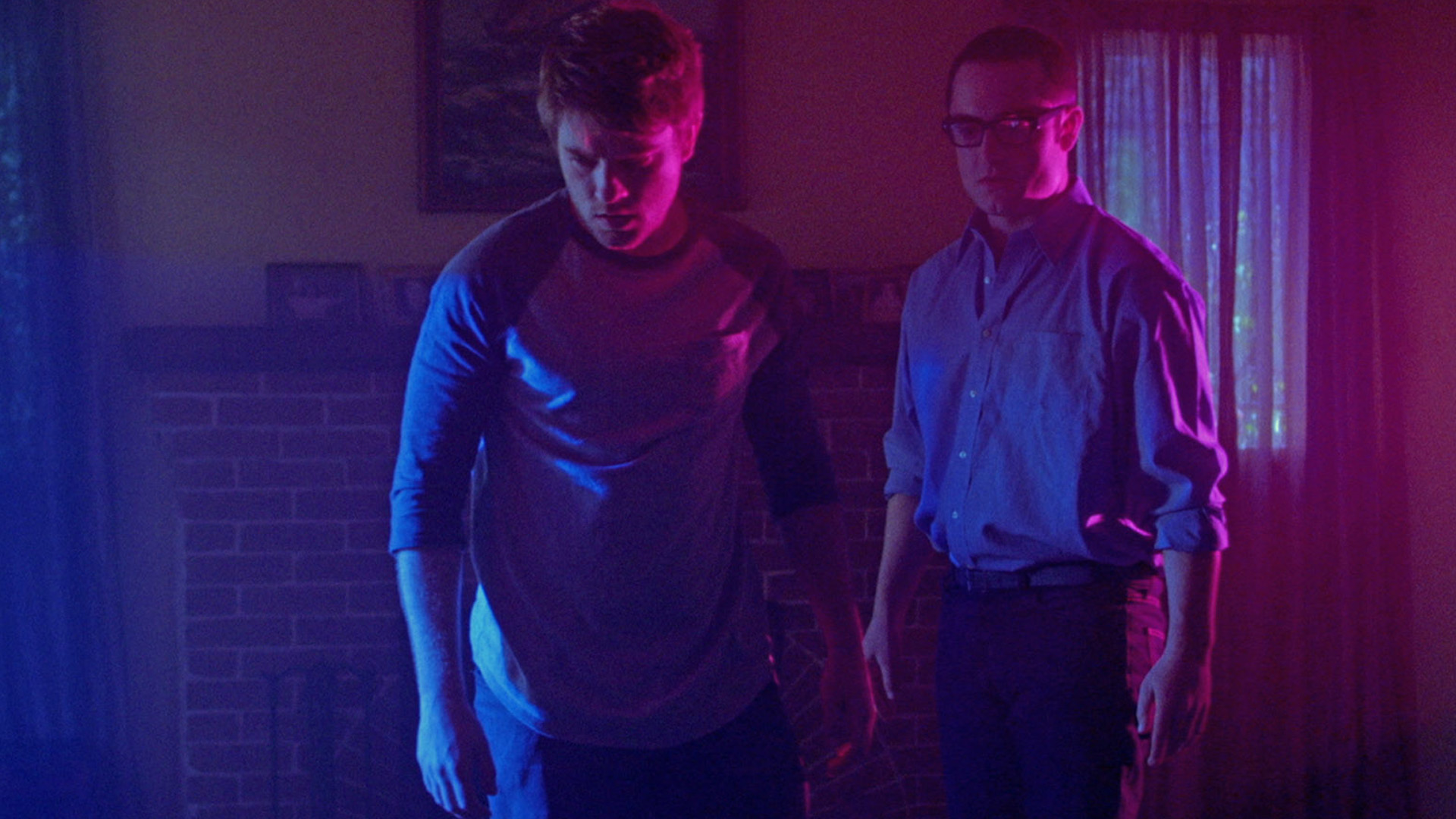
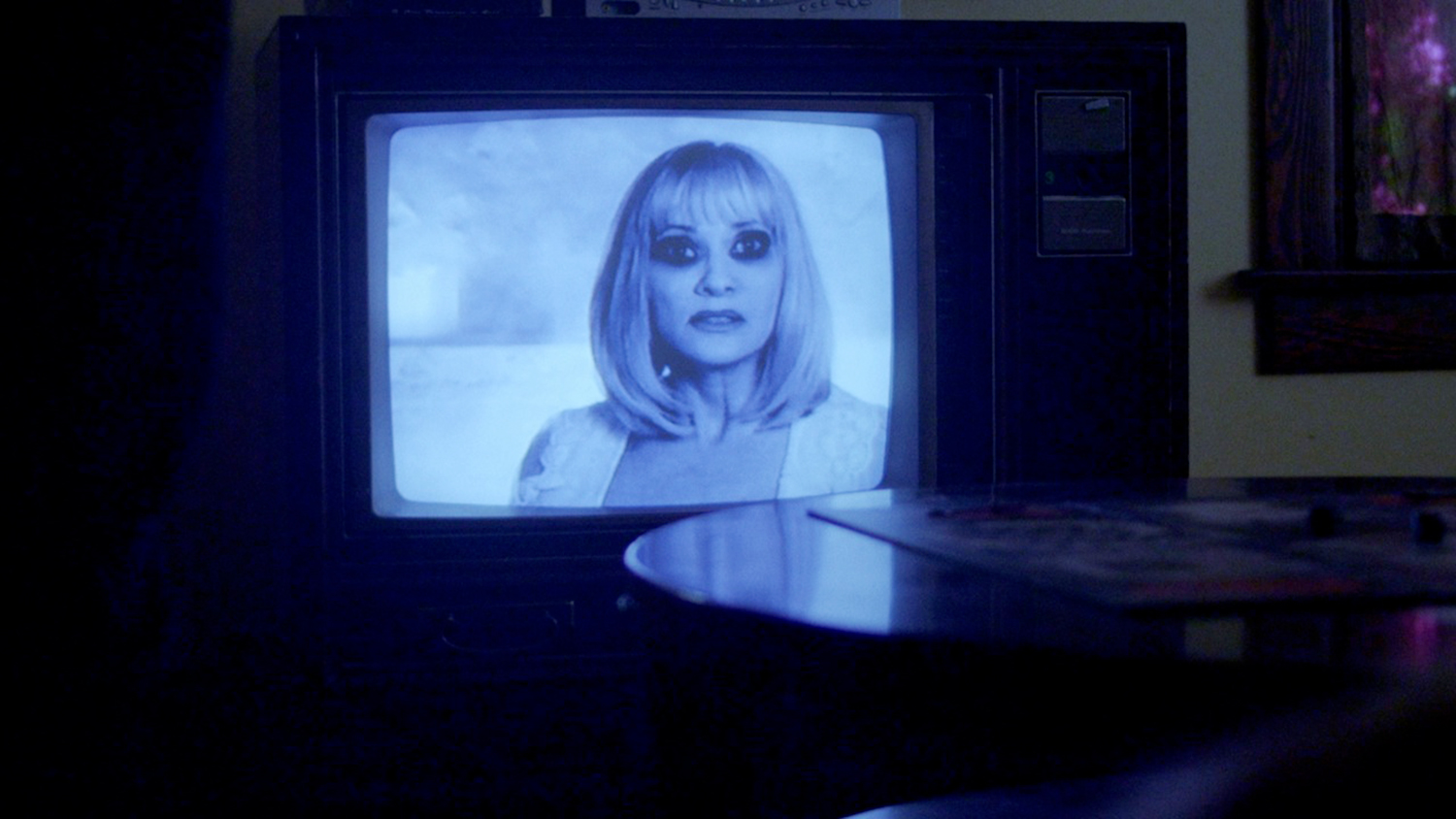
In trying to find what happened to their missing father, will these two brothers roll the dice and go “Beyond the Gates?”
Beyond the Gates
Speaking of not being alone, “Beyond the Gates” is best watched with a group of friends. Even the film’s titular board game requires more than one player. And, like films with similar concepts as “Jumanji,” once you start playing, there is only one way to stop.
Two estranged brothers are brought together after their father’s disappearance. When going through his possessions, they find a VHS board game called “Beyond the Gates.” The brother’s play the tape, and at the instruction of the woman on it, begin the game as well. The more they play, the more certain they become that this is no normal ‘80s novelty.
From its concept and up, this film is a loving homage to ‘80s horror movies. VHS board games themselves were popular during the time, and “Beyond the Gates” makes effective use of its meagre budget in recreating the neon-purple-and-blue lights and the synth-sounds synonymous with the era. Other special effects range from eerie to gory as the two brothers find themselves on the cusp of a dimension beyond their understanding.
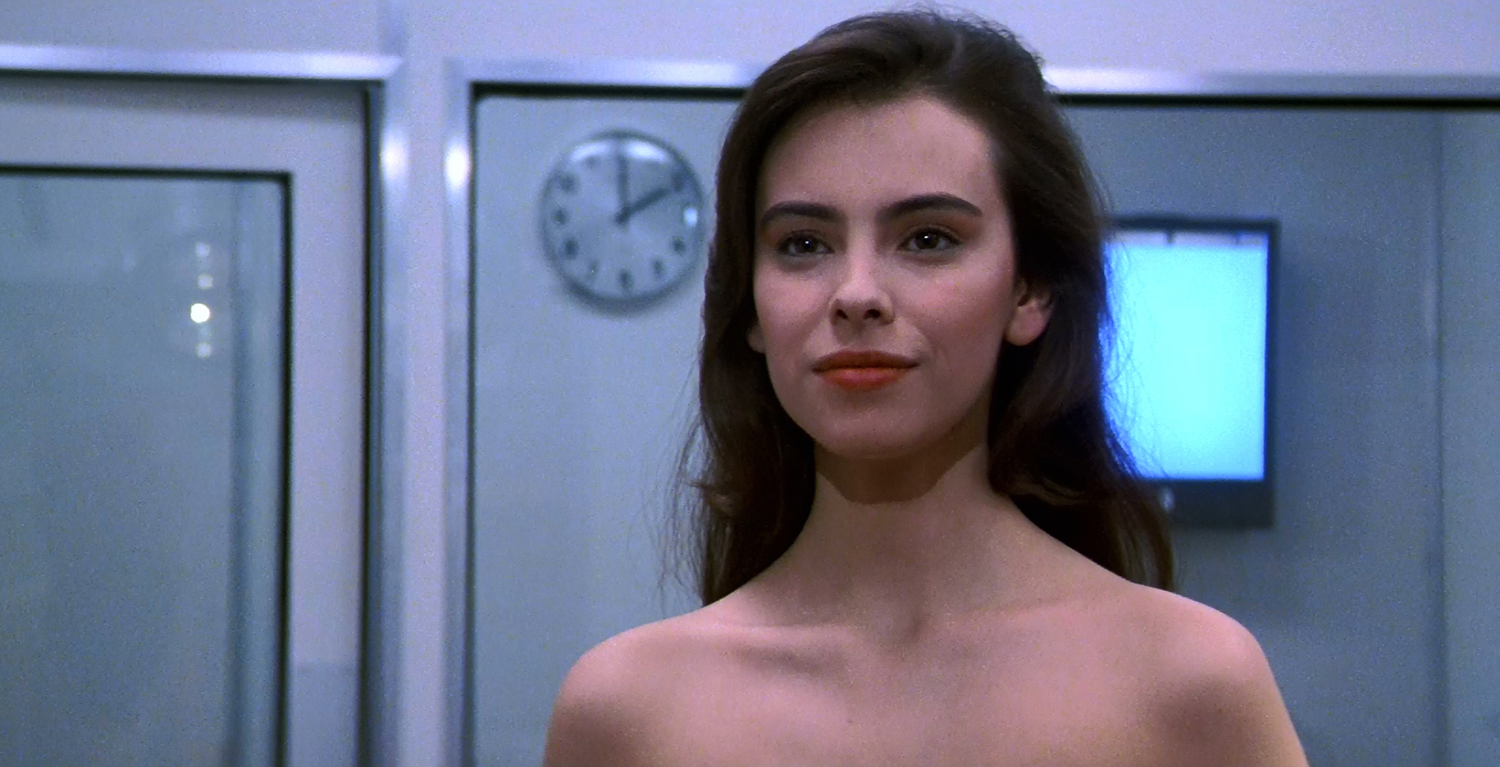
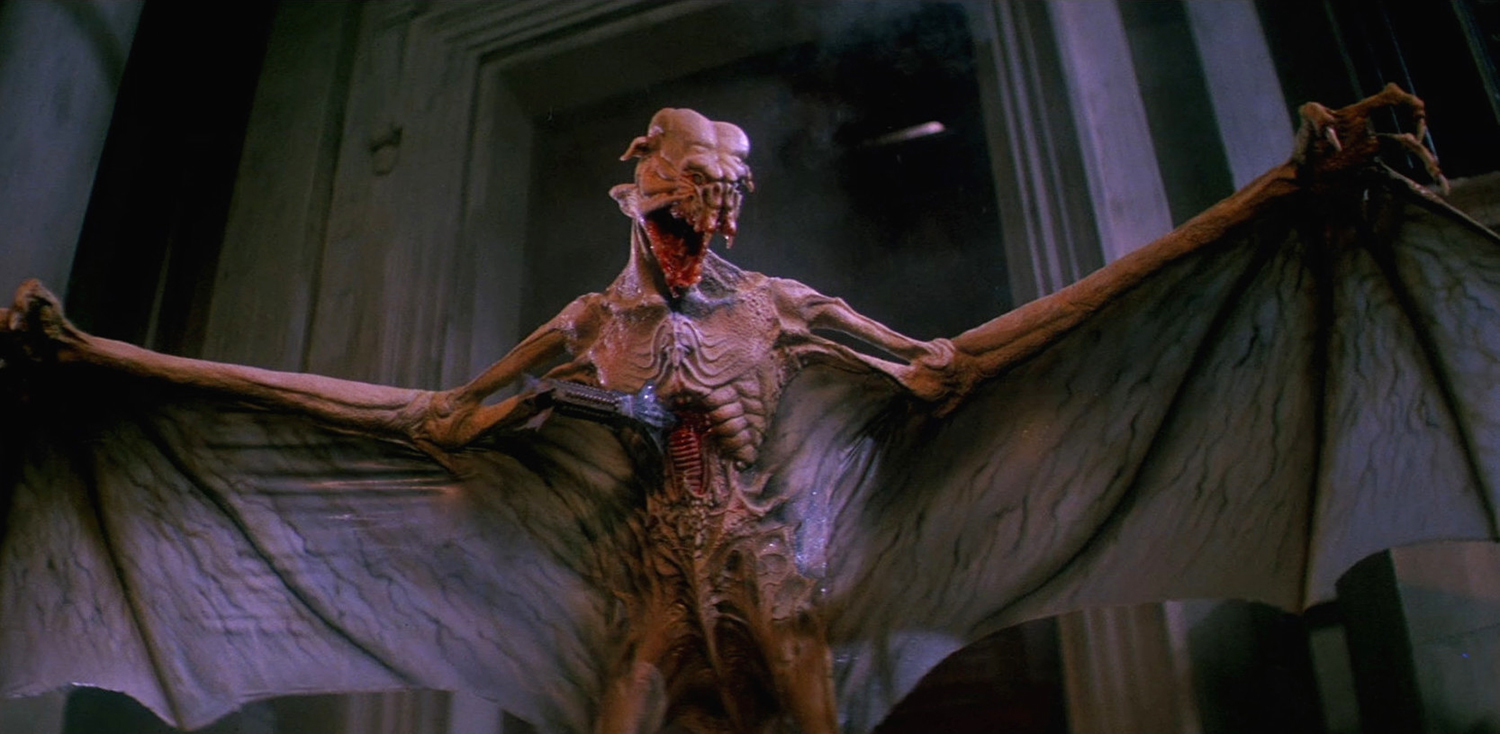
The best of ’80s practical and digital effects awaken a space vampire in “Lifeforce.”
Lifeforce
“Beyond the Gates” is an earnest attempt to recapture the lights and effects of ‘80s horror movies; “Lifeforce,” directed by the late Tobe Hooper of “The Texas Chainsaw Massacre” fame, is the genuine article of that era.
The crew of a space shuttle discovers an enormous derelict spaceship hidden in the tail of Halley’s Comet. They board the Giger-esque mystery ship and discover it is full of shriveled, bat-like corpses, as well as three humans in suspended animation. These three are space vampires, and when they are brought to Earth, they have the opportunity to terrorize the people of London by draining their life force.
“Lifeforce” was conceived by Hooper as a love letter to the Hammer horror films of his early career. The special effects used in the film manage to impress viewers (even by today’s standards), and while this film’s lineage to Hammer films is apparent, it also goes out of its way to defy tropes of that genre. The space vampires are a force beyond human kind who defy explanation.
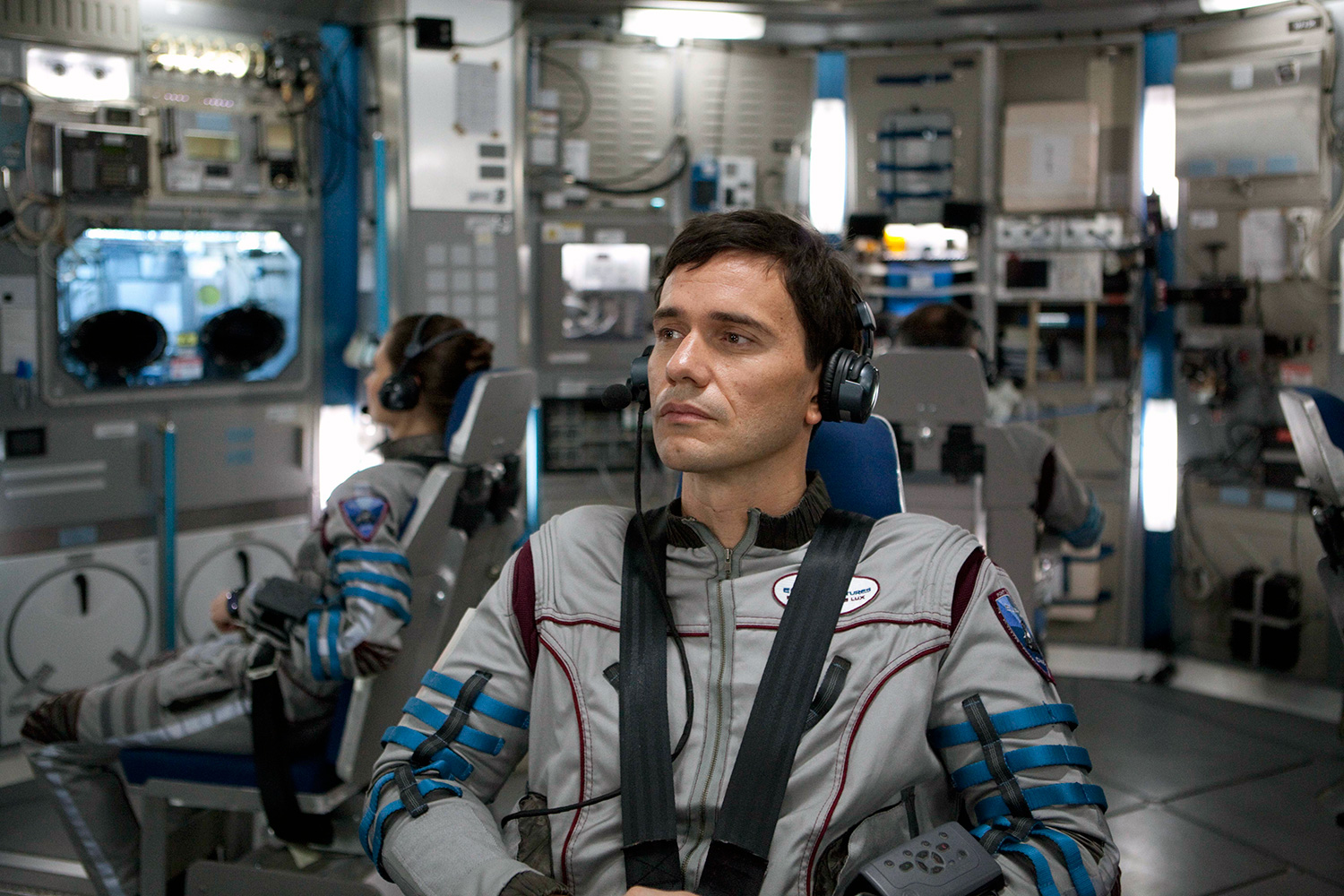

“Europa Report” offers one of the finest examples of found footage film as it recounts the fictional mission to Jupiter’s moon.
Europa Report
Like “Lifeforce,” “Europa Report” similarly manages to defy the tropes of its genre; the difference here is that the genre is found-footage.
The film follows a fictional privately-funded mission to one of Jupiter’s moons (Europa) following the discovery of water on it. However, we know from the very beginning that something has gone wrong; the crew lost contact with mission control nearly a year ago. All of the footage the audience sees comes from the crew’s journal updates, and these updates have been edited together with commentary by their mournful commanding officer on Earth.
The closest other film on this list to “Europa Report” is “Sunshine,” as the horror comes from other humans instead of from an outside force. The film also draws clear inspiration from Stanley Kubrick’s “2001: A Space Odyssey” in its execution. Both horror and beauty are apparent in the meditative, understated way that the crew interact with each other, and in the way that they deal with their deteriorating situation. The film’s visuals aim to reflect the real-life beauty and isolation of outer space; it is as close to a true representation of this as you are likely to find (except perhaps for “Gravity”).
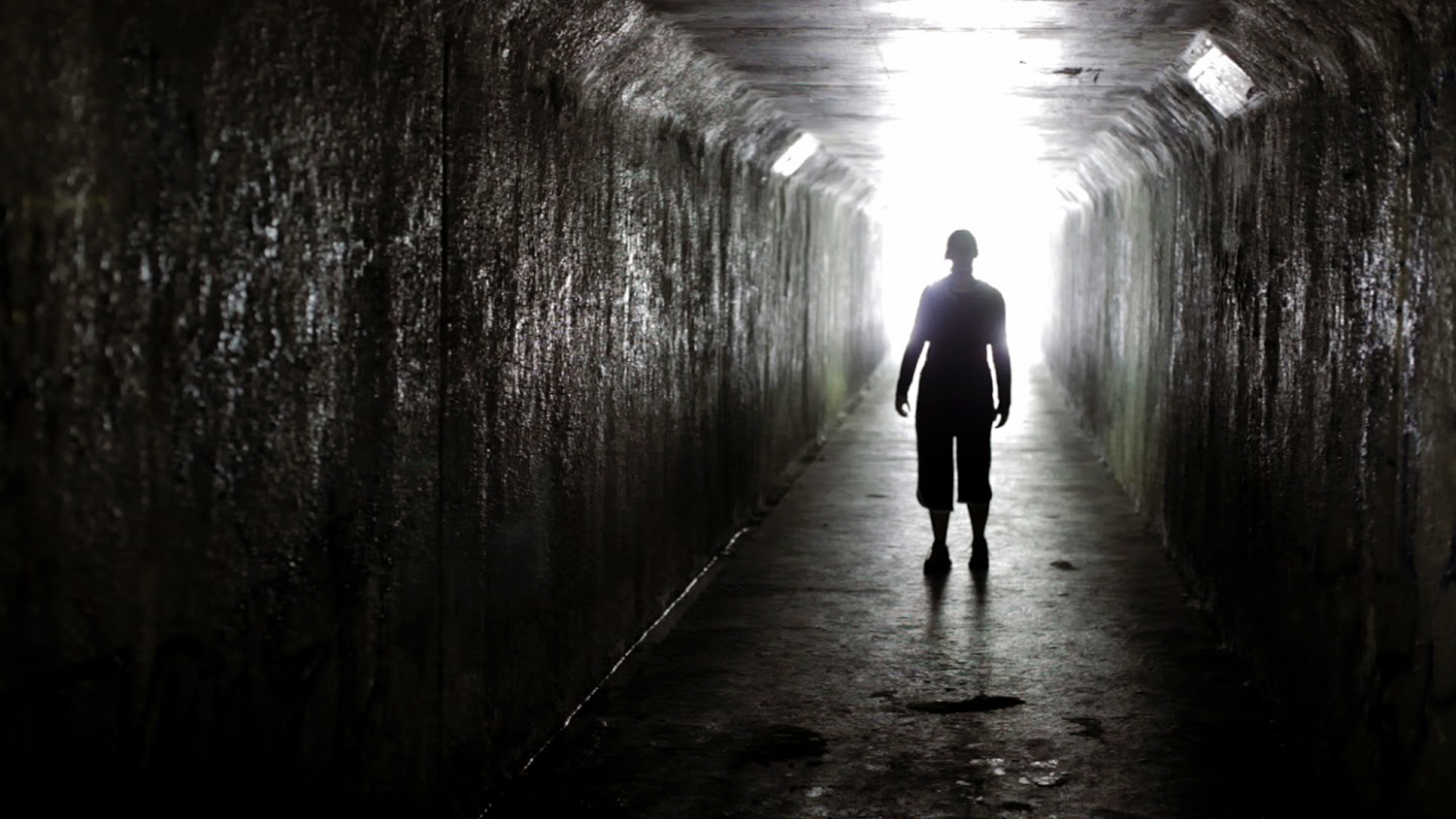
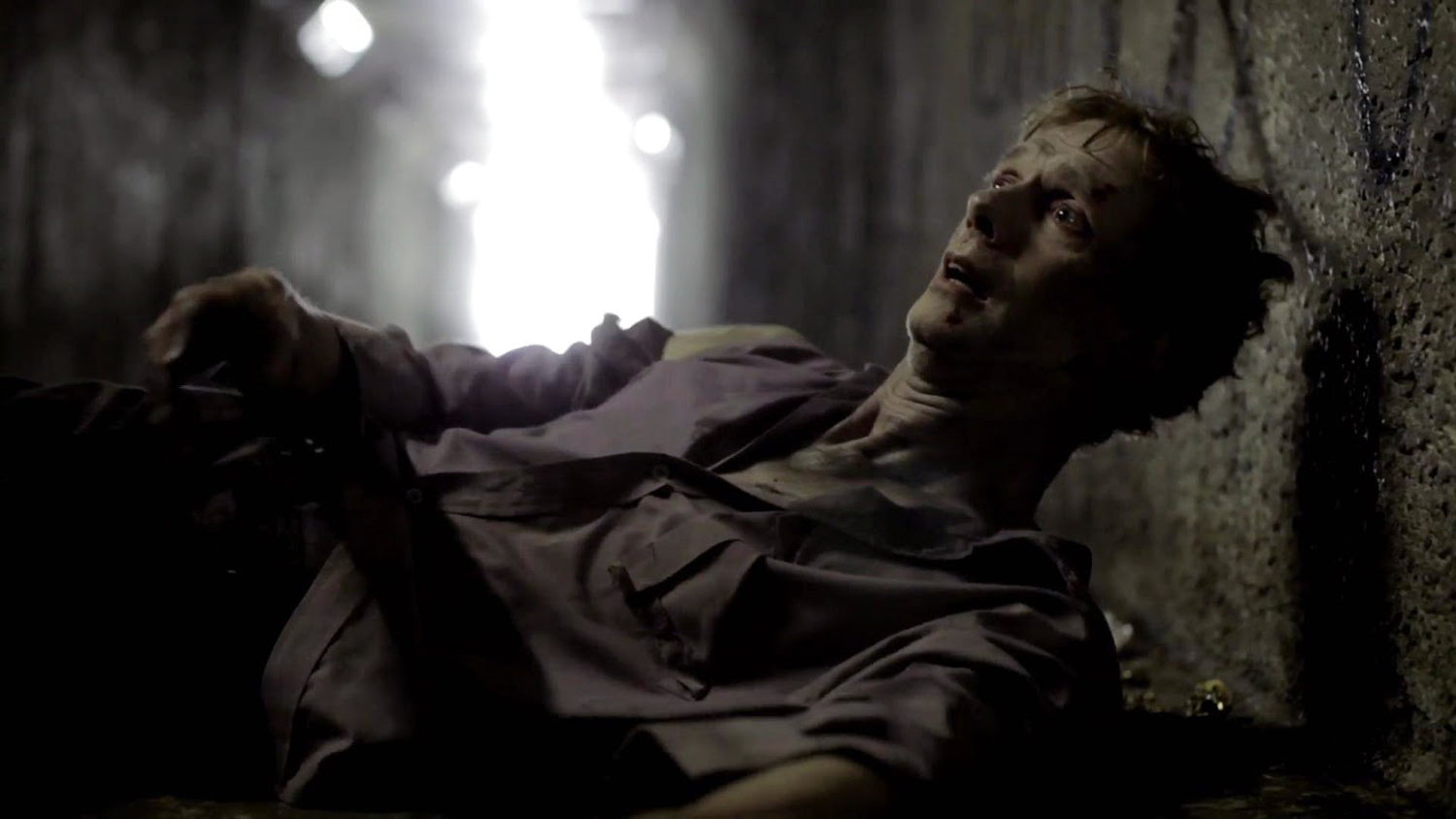
A family is put to the test as they learn what they are willing to give up to try and rescue a loved one from the underground.
Absentia
Not all cosmic horror needs to be centered around outer space, though. “Absentia” brings the horror back down to Earth. Tricia is a woman in California whose husband has been missing for seven years. Just as she is preparing to declare him dead in absentia, her sister Callie comes to her with new information. Callie has found a strange tunnel near Tricia’s house that she thinks could be linked to Daniel’s disappearance.
“Absentia” is a dark urban fairytale in the same creative vein as Guillermo del Toro’s “Pan’s Labyrinth” and “Don’t Be Afraid of the Dark.” Tricia and Callie are drawn into the influence of a strange, supernatural world, referred to by people who have been there as “underground.” The film aims to make up for a relatively small budget by focusing on its characters and their relationship with each other. Callie, a former drug user, must prove that what she has seen is real and not just the symptoms of a relapse.
The creatures from the underground are seen very little in the film, as is the underground itself. While not as flashy as other films on this list, the film’s restraint is one of its biggest strengths. Its monsters are the ones that you never quite get a good look at; they are always just at the edge of your vision. The special effects are limited but effective, and they are employed just enough to play with the audience’s imagination.
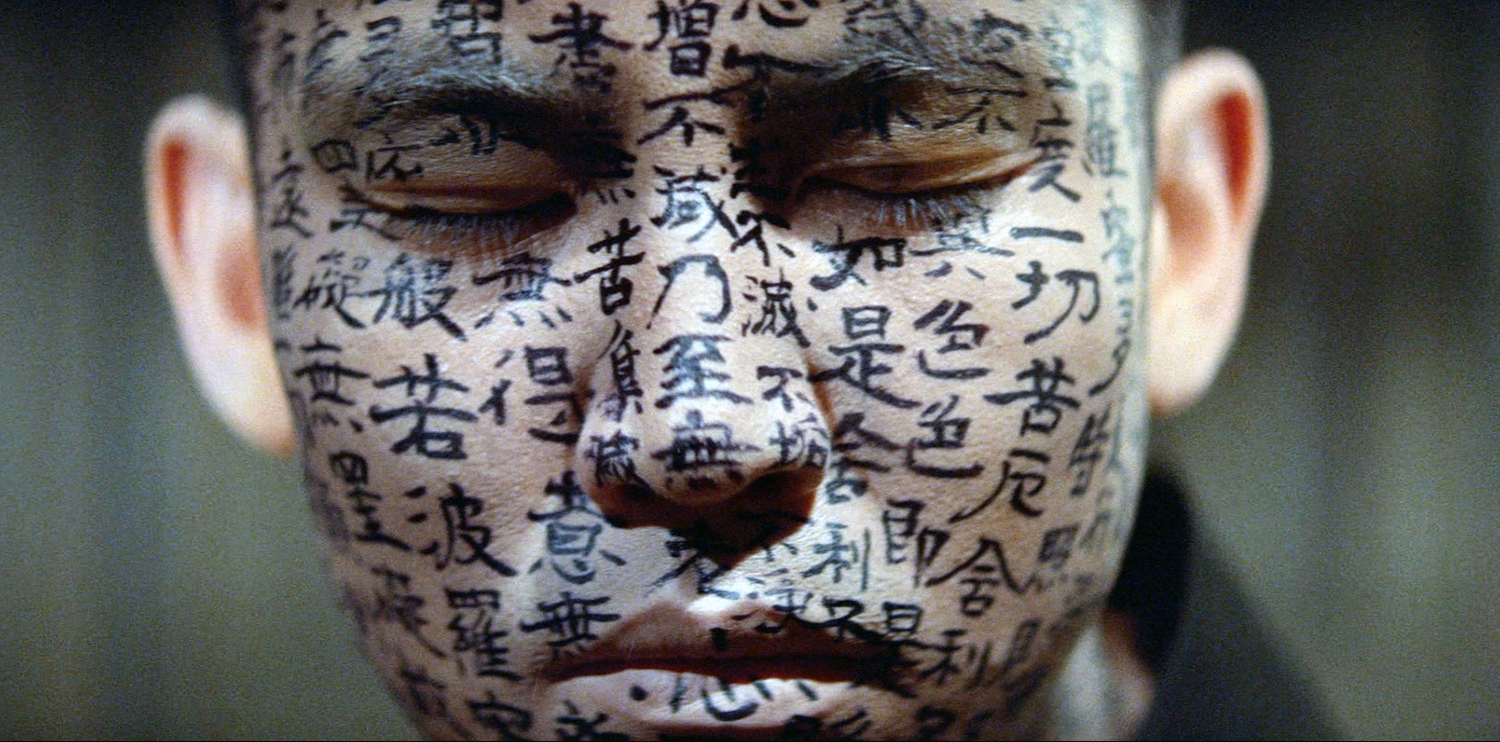
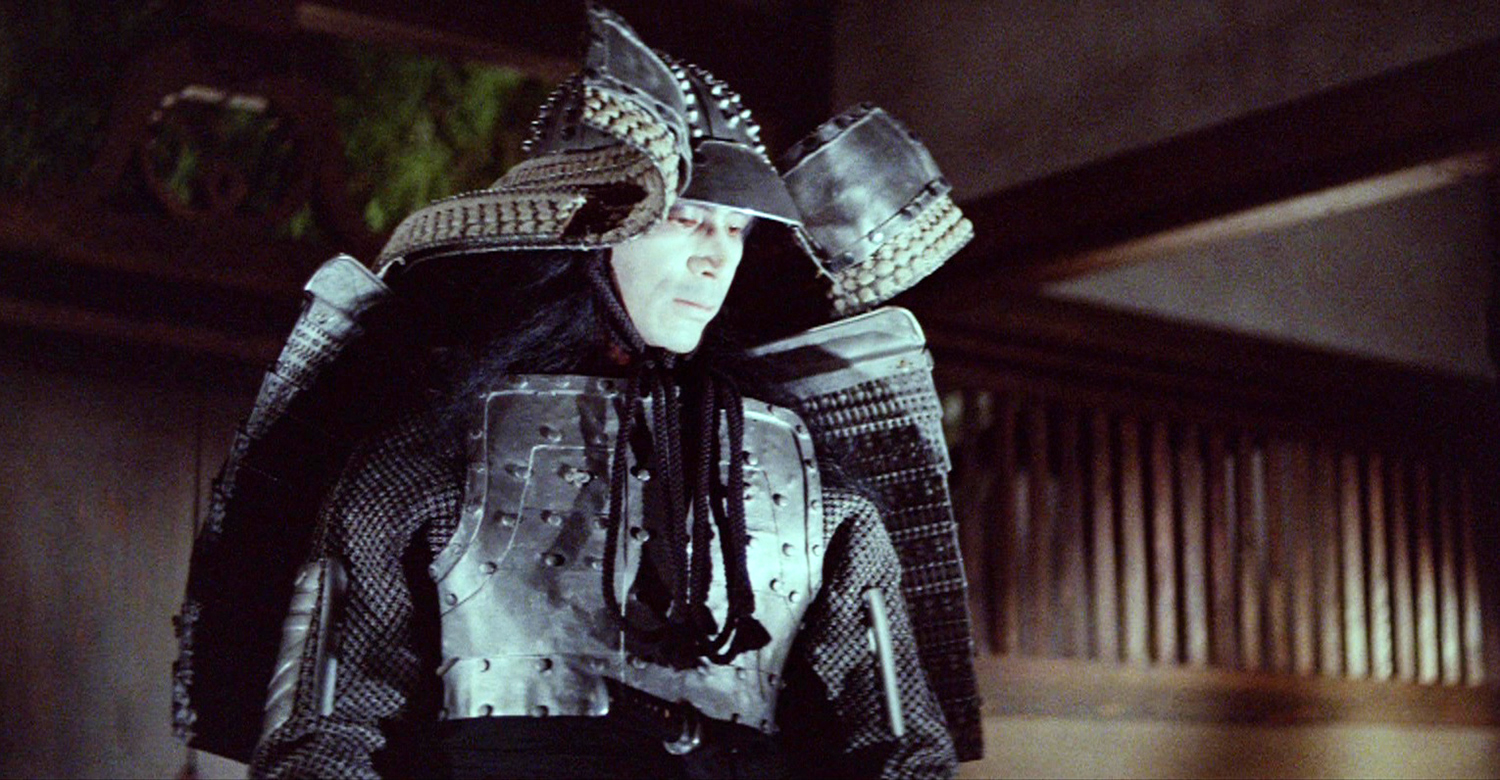
“Kwaidan’s” beautifully-stylized ghost stories are rife with supernatural creatures beyond human understanding.
Kwaidan
Restraint is one of the most important tools at the disposal of anyone telling a horror story. All four of the stories told in “Kwaidan” demonstrate this superbly.
The first story, “The Black Hair,” tells the story of a swordsman who leaves his wife for a wealthier woman. He eventually comes to regret his choice. Some decisions are not so easily undone, though, and the story’s ending is guaranteed to surprise. In “The Woman of the Snow,” a man meets a ghost who makes him promise to never speak of their encounter. His will is tested when he meets and falls in love with a woman who is identical to the ghost. “Hoichi the Earless” tells the story of the musician Hoichi, and how he earned his title. Finally, “In a Cup of Tea” tells the somewhat meta story of a writer whose publisher is coming to visit. In preparation, he writes a story about a samurai who keeps seeing a man’s face in his tea.
“Kwaidan” is a horror anthology that was adapted to the screen from the short stories of Koizumi Yakumo, a Greek-born writer who later naturalized in Japan and changed his name from Lafcadio Hearn. He had a special interest in Japanese folklore and fairytales, and his writing was heavily translated for Western audiences. He is especially relevant here, because Yakumo, a European man who travelled the world and adopted Japan as his culture, actually predated H.P. Lovecraft. While it is difficult to know for sure if Yakumo had a direct impact on Lovecraft’s work, the wide-reaching nature of his translations in the West certainly had an impact on Western horror during Lovecraft’s younger years.
Images © respective film studios.
